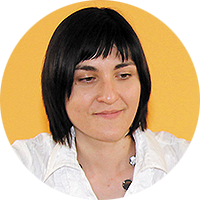Course title:
Sociolinguistics
Course code: PSL220
Course status: Elective
Course leader: Aleksandra Ščukanec
Course instructor:
Language of instruction: English
Total hours: 8S
Form of instruction: Lecture
ECTS credits: 4
Course content by topics:
- Sociolinguistics as a branch of linguistics. The myth of homogeneity versus language stratification and its varieties. Langue and parole, competence and performance versus communicative competence. Speakers’ repertoire within speech community.; 2. Regional (rural) and urban dialectology. Horizontal and vertical view of language. Social class, age, and gender as extra-lingistic elements in the explanation of language varieties and free variants.; 3. Language as a component of ethnicity. Substratum effect. Hypercorrection as a result of social pressure. African American Vernacular English and its origin. Is there a connection between race and language? Matched- guise experiments results.; 4. Language and gender. Grammatical and natural gender in languages (English, French, Croatian). Difference between male and female use of language. Language taboo for women. Women’s language use in ‘primitive’ societies. Accounting for differences between women’s and men’s language. Activities to change the present usage.; 5. Language varieties in context. Linguistic communities verbal repertoire. Registers. Style as a continuum. Slang. Elicitation of normal, informal speech.; 6. Address reciprocal, non-reciprocal. Polite and familiar V/T. Address in some Asian languages. Power and solidarity.; 7. Diglossia and monolingualism( Ch. Ferguson). Diglossia and bilingualism.(J. Fishman). H (high) and L (low). varieties. Code switching. Language switching in multilingual communities.Identities.; 8. Revision. Assignments presentations.; 9. Conversation analysis as structured, non-random, sequences of utterances. Cooperative principle (Grice) and forcing utterance interpretation. Direct and indirect speech acts. Intercultural misunderstandings. Interethnic communication differences. Men and women in conversation.; 10. Nation states, monolingualism and multilingualism. Individual and social bilingualism.; Minority languages in nation states. Welsh and Scots Gaelic. ‘Melting pot’ in the USA; bilingualism and ‘English Only’.;
- Standardization. E. Haugen’s model. Status planning and corpus planning (H. Kloss) Standardization of English. Samuel Johnson and his dictionary. Standardization of Croatian and Norwegian (Bokmal and Nynorsk).; 12. Language and Geography. Traditional dialectology. NORM. The spread of innovations. The loss of /r/ in English. Dialect levelling. Koineization.Dialects in USA. Innovations across language barriers: Schprachbund, Balkanisms.;
- Languages in Contact. Lingua franca. Simplification and reduction of language in pidgins. Portuguese as the basic structure of pidgins? Creole. Structural similarities in Creoles.; 14. Sociolinguistics and ‘new social sensibilities’ . Intentional efforts to change language and language behaviour towards women and minorities. Language discrimination, racism and sexism. ‘Political correctness’.
Learning outcomes at course level:
On completing the course in Sociolinguistics the students will be able to: 1) recognize the differences between formal linguistics in the 20th century, followers of De Saussure and Chomsky and sociolinguistics, and followers of Labov and others, as a reaction to the conceptualization of language as a homogenous system; 2) find links between a language variety and a social group (class, gender, ethnicity, etc.) as a marker of the social identity of members of these groups; 3) describe language varieties using interviews, surveys and conversations with selected informants and identify their frequency in various situations (Labov, Trudgill and others); 4) reach a conclusion that there is a tendency in sociolinguistics research to move from dominantly linguistic essentialism in the 1960s to the larger reliance on anthropology, sociology and constructionism (Blommaert, Coupland etc.).; 5) recognize that language and its varieties do not only reflect social structure but also construct it; 6) recognize that multilingualism is not an exception in speech communities; 7) recognize that sociolinguists have a critical attitude towards the dominant ideology, which regards the standard language and its speakers as superior over other varieties and their speakers, thus contributing to social inequality (Labov, Bourdieu and other authors.)
Learning outcomes at programme level:
| IU1 | IU2 | IU3 | IU4 | IU5 | IU6 | IU7 | IU8 |
| x | x | x | X |
Reading list:
Obligatory reading: Dalibor Brozović, Standardni jezik, Zagreb, 1970; Radoslav Katičić, Jezikoslovni ogledi, Zagreb, 1971; Richard Hudson, Sociolinguistics, Cambridge University Press (drugo izdanje) , 1996; Ronald Wardaugh and Janet M. Fuller, An Introduction to Sociolinguistics, Blackwell (7th edition), 2015; Peter Trudgill, Sociolinguistics, Language and Society, Penguin (fourth edition), 2000; Suzanne Romaine, An Introduction to Sociolinguistics, Oxford University Press (second edition), 2000; Additional reading: Gaetano Berutto, Fondamenti di sociolingustica, Bari, 2000; Bernard Spolski, Sociolinguistics, Oxford University Press, 1998.; Dell Hymes, Foundations in Sociolinguistics, An Anthropological Approach, 1997; William Downes, Language and Society, Cambridge University Press, 1998; Florian Coulmas, A Handbook of Sociolinguistics, Blackwell, 2000.; Jan Blommaert, Discourse, Cambridge University Press, 2005; Nikolas Coupland, Sociolinguistics: Theoretical Debates. Cambridge University Press, 2016.
Assessment of student achievement: course attendance Quality assurance mechanism: student survey

